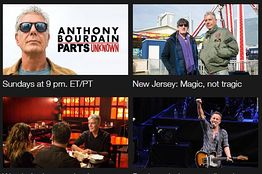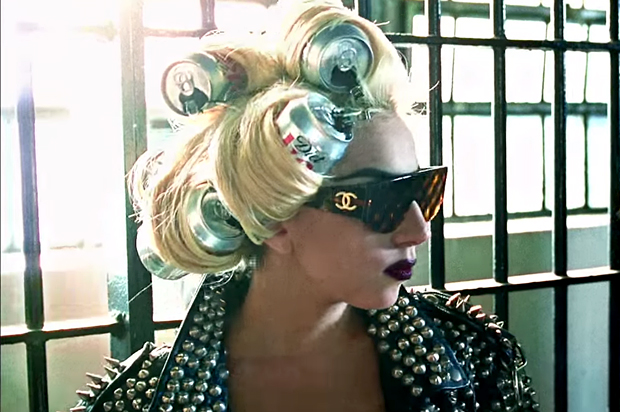CNN’s ‘Courageous’ Step; The Politics of Native Advertising; Product Placement for a Song
by John R. Carroll onJun 9, 2015 • 1:37 am No CommentsAfter a long-awaited vacation with the Missus on the always alluring French Riviera, the hardtracking staff has returned to the Global Worldwide Headquarters to find the usual Stealth Marketing Shambles in the mediaverse.
Start with the latest: CNN is joining the New York Times’s T Brand Studio, the Washington Post’s Brand Connect, and umpteen other publishers’ in-house studios creating ads in sheep’s clothing for marketers.
From the Wall Street Journal:
CNN Unveils New Studio to Produce Content for Advertisers
CNN is creating an in-house studio that will produce news-like content on behalf of advertisers, a move that reflects marketers’ growing desire for articles and videos that feel like editorial work.
About a dozen staffers (made up of journalists, filmmakers and designers) will help launch the new unit, called Courageous. The division will fashion and distribute “branded content” across CNN’s fleet of properties, from TV to the Web and newer platforms like Snapchat.
Courageous? Really? That’s the most ridiculous name this side of “Wolf Blitzer.”
Next most ridiculous is CNN’s assertion that advertising and editorial will retain the traditional firewall between them.
“This isn’t about confusing editorial with advertising,” said Dan Riess, executive vice president of integrated marketing and branded content at Turner. “This is about telling advertisers’ stories — telling similar stories but clearly labeling that and differentiating that.”
Uh-huh. Except branded content is all about confusing editorial with advertising.
In for a dime, in for a lot of dollars, yeah?
* * * * * * *
Also jumping feet first into the stealth marketing pool: The Blob That Is Politico.
From Michael Sebastian in Ad Age:
Politico Hires Dell’s Managing Editor to Build a ‘Brand Journalism’ Team
Stephanie Losee Will Help Run Politico Focus
Politico has hired a Dell marketing executive to help build and run a department called Politico Focus that will create content for brands — a first for the political news organization.
Stephanie Losee, who helped build Dell’s content-driven marketing and held the title of managing editor, has joined Politico as its executive director of brand content. Her career began as a tech reporter with Fortune magazine.
Losee adds: “I want to restore the flow of money between brands and publishers to find a sustainable model for journalism. This is the right place to test my theories.”
Politico isn’t exactly a virgin in native advertising terms. As the hardtracking staff previously noted, Washington Post media watchdog Eric Wemple has chronicled the cozy relationship between Mike Allen’s Politico Playbook and its advertising partners.
A review of “Playbook” archives shows that the special interests that pay for slots in the newsletter get adoring coverage elsewhere in the playing field of “Playbook.” The pattern is a bit difficult to suss out if you glance at “Playbook” each day for a shot of news and gossip. When searching for references to advertisers in “Playbook,” however, it is unmistakable.
Regardless, Politico Focus will employ a combination of full-time staffers and freelancers to produce the ads in sheep’s clothing. At least for now, according to Ad Age, “it won’t ask the newsroom to produce content for advertisers.”
Of course (see above), in-house creative studios are all the rage these days in the native advertising steeplechase, which is estimated to reach $21 billion in the next several years. Presumably, Politico’s overcaffeinated coverage of policy and policymakers will provide fertile ground for the sleight-of-ad set.
* * * * * * *
Final indignity, via Salon:
Pop music’s biggest sellout: How many brands paid for product placement in your favorite songs?
Your ad is now a song, and vice versa, thanks to opaque backroom deals
Music fans sometimes cringe when one of their favorite songs turns up in a TV commercial, especially songs that seem to be about rebellion or fighting the Man. But there’s a whole different level of ickiness going on these days – since approximately the turn of the century. As a new Music.Mic story about research into music and branding puts it, “Brands and advertising are creeping in at all levels of the creative process: Your favorite songs and music videos are becoming advertisements.”
The trick is that as with a lot of what’s taking place in the music industry these days – witness the backroom deals between the major labels and the streaming services, most of which leave the musicians out of the equation – the financial relationships are mostly opaque. What we do know, for instance, is that Chris Brown’s “Forever” included a reference to “double your pleasure” that was not just a passing reference to Wrigley’s Double Mint gum, but a paving of the way for a Wrigley’s commercial Brown would release a year later.
Even worse:
We know that the ever shameless Lady Gaga – she of South By Southwest’s Doritos stage – enlisted sponsorships from Miracle Whip, Polaroid, Virgin Mobile, the Plenty of Fish dating site and Hewlett Packard for her big-budget, high-concept, consumer-hell “Telephone” video. And that Courvoisier came up with a sponsorship deal with Busta Rhymes after his song “Pass the Courvoisier” jolted their sales. “Furthermore,” Tom Barnes’ story adds, “Universal Music Group has begun rolling out a program to retroactively insert advertisements into older music videos, whose artists didn’t think to monetize every inch of their art.”
And worst of all, the academics are on this trend like Brown on Williamson.
Analyzing the top 30 songs on the Billboard charts every year from 1960 to 2013, [University of Colorado at Denver] researcher Storm Gloor found that more than half of the 1,544 brand mentions he identified in popular lyrics occurred between 2000 and 2010. As the general length of songs and number of words in them have increased, so too has the percentage of brand-associated words. In 2010, 1.8% of the words in lyrics could be considered branding. That might seem small, but it’s nearly double the percentage 25 years earlier. And in 2006, 2 out of every 3 songs in the study included at least one branding reference.
Damn! Pass the Courvoisier, wouldya?
John R. Carroll is media analyst for NPR's Here & Now and senior news analyst for WBUR in Boston. He also writes at Campaign Outsider and It's Good to Live in a Two-Daily Town.
John R. Carroll has 305 post(s) on Sneak Adtack

